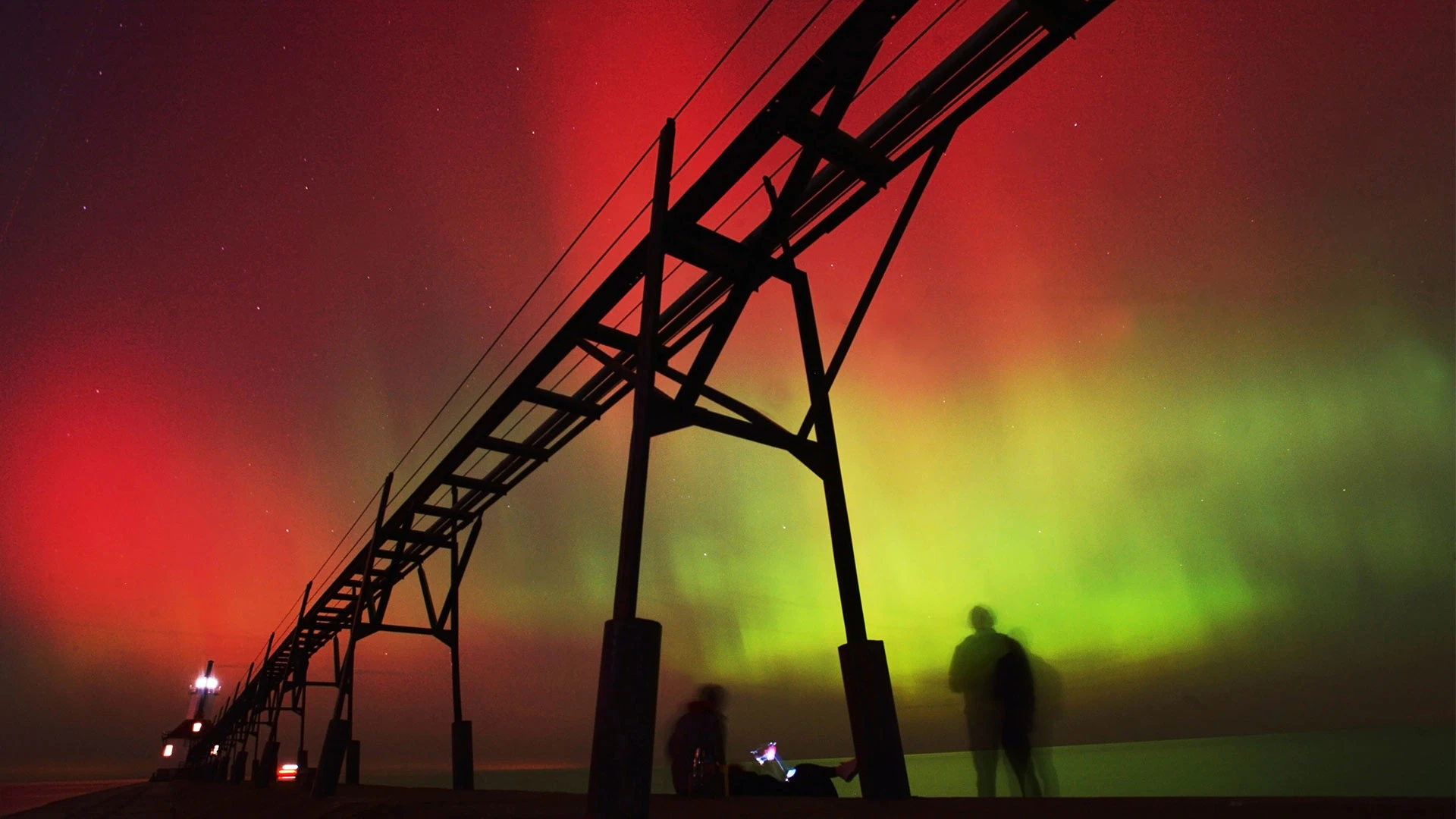
"Space weather forecasters issued an alert on Tuesday for incoming severe solar storms that could produce colorful northern lights and temporarily disrupt communications.In the past few days, the sun has burped out several bursts of energy called coronal mass ejections that could reach Earth Tuesday night and early Wednesday. The potential severe geomagnetic storms could disrupt radio and GPS communications, according to forecasters with the National Oceanic and Atmospheric Administration."
"How northern lights happen The sun is at the maximum phase of its 11-year activity cycle, making the light displays more common and widespread. Colorful northern lights have decorated night skies in unexpected places and space weather experts say there are more auroras still to come.Aurora displays known as the northern and southern lights are commonly visible near the poles, where charged particles from the sun interact with Earth's atmosphere."
"Last year, the strongest geomagnetic storm in two decades slammed Earth, producing light displays across the Northern Hemisphere. And soon afterward, a powerful solar storm dazzled skygazers far from the Arctic Circle when dancing lights appeared in unexpected places including Germany, the United Kingdom, New England and New York City.The sun's active spurt is expected to last at least through the end of this year, though when solar activity will peak won't be known until months after the fact, according to NASA and NOAA."
Forecasters issued an alert for incoming severe solar storms triggered by several recent coronal mass ejections that could reach Earth Tuesday night and early Wednesday. Potential severe geomagnetic storms may temporarily disrupt radio and GPS communications. Aurora brightness and southern extent depend on arrival timing and interaction with Earth's atmosphere, with displays possibly visible across much of the northern U.S. and as far south as Alabama and Northern California. The sun is at solar maximum of its 11-year cycle, increasing aurora frequency. Recent storms produced widespread displays beyond the Arctic, and the active spurt is expected to last at least through the end of the year.
Read at Fast Company
Unable to calculate read time
Collection
[
|
...
]